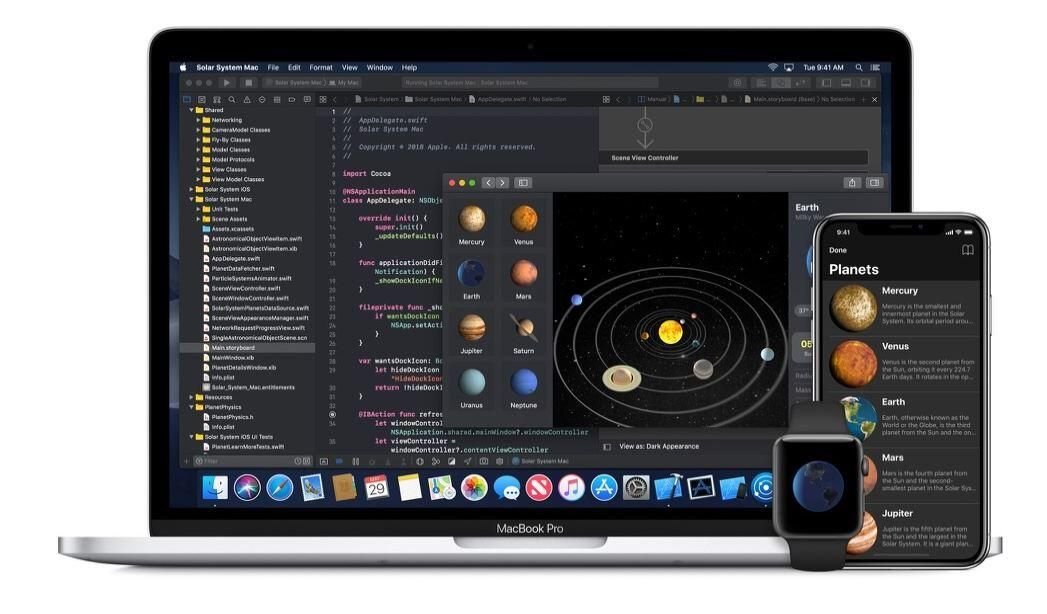
Understanding the Apple Developer Program
The Apple Developer Program is a comprehensive framework that provides developers with the necessary tools and resources to create, test, and distribute applications across various Apple platforms, including iOS, macOS, watchOS, and tvOS. By joining this program, developers gain access to a plethora of essential resources, such as developer documentation, forums, and beta software, which can significantly enhance the development process.
One of the primary benefits of the Apple Developer Program is the ability to distribute one’s applications on the App Store, allowing developers to reach millions of potential users. Furthermore, members of the program are eligible for technical support through Apple, ensuring that they have the assistance they need as they navigate the development landscape. This support is crucial, particularly for those new to app development or those encountering technical challenges.
Membership in the Apple Developer Program is available in two primary options: Individual and Organization. Individual memberships are suitable for solo developers looking to publish their apps, while Organization memberships cater to businesses or teams, enabling them to manage their applications collectively. Additionally, developers must meet certain requirements, including agreeing to Apple’s terms, adhering to the App Store Review Guidelines, and providing taxation information if applicable.
The registration process for the Apple Developer Program is relatively straightforward. Interested developers can sign up on the Apple Developer website, where they will need to create an Apple ID if they do not already have one. There is an annual membership fee of $99 that applies to both Individual and Organization memberships, which contributes to the maintenance and enhancement of resources available to developers. This fee is a crucial investment for those serious about a career in app development for Apple platforms.
Tools and Resources Available for Developers
To facilitate the app development process, Apple provides a robust suite of tools and resources tailored specifically for developers. Central to this ecosystem is Xcode, Apple’s integrated development environment (IDE), which offers a comprehensive platform for designing, coding, testing, and debugging applications. Built specifically for creating apps within the Apple ecosystem, Xcode streamlines the development process with features such as a visual interface builder, a code editor with syntax highlighting, and tools for performance analysis. Developers can easily manage resources and simulate multiple device environments, making it an indispensable tool for iOS, macOS, watchOS, and tvOS development.
In addition to Xcode, the Swift programming language is another critical resource for developers. Swift is designed for performance and safety, promoting efficient coding practices while allowing developers to create powerful and maintainable applications. With its modern syntax and strong type system, Swift enhances productivity and enables developers to write cleaner and more expressive code. Developers who are familiar with Swift can leverage its capabilities to build engaging and user-friendly applications for various Apple platforms.
Apple also offers extensive documentation and resources on the Apple Developer website, which serves as a comprehensive repository of information, guides, and best practices. This includes detailed API references, sample code, and extensive design guidelines to ensure apps are not only functional but also adhere to the aesthetic and navigational standards upheld in the Apple ecosystem. Furthermore, developers can access frameworks and libraries such as UIKit, SwiftUI, and ARKit, which empower them to enhance user experiences and integrate advanced features such as augmented reality. Adhering to these design guidelines and leveraging the tools and resources available will significantly improve the likelihood of app success on the App Store.
App Development Process: From Idea to Launch
Embarking on the journey of app development on Apple platforms necessitates a structured approach, transforming an initial idea into a polished application ready for the App Store. This end-to-end process can be broadly divided into several critical stages, each pivotal in ensuring a successful outcome.
The first phase is ideation and research, which involves brainstorming concepts and identifying user needs. During this phase, developers should analyze existing apps in the market to understand their strengths and weaknesses. Conducting surveys or interviews with potential users can yield valuable insights into the features that will address user pain points effectively. This groundwork establishes a strong foundation for the app’s vision.
Following ideation, the design phase focuses on creating an intuitive user interface (UI) and enriching user experience (UX). Utilizing wireframe and prototyping tools, designers can visualize the app’s layout and flow. Careful attention must be given to ensure the interface aligns with Apple’s Human Interface Guidelines, ensuring a cohesive look and feel that is in harmony with other Apple applications.
Once the design is finalized, the development phase begins. Here, developers can choose methodologies such as Agile or Waterfall. Agile emphasizes iterative development and flexibility, enabling regular adjustments based on feedback, while Waterfall adopts a more linear approach. Selecting the right methodology is essential, as it influences the project timeline and resource allocation.
After development, thorough testing is imperative to identify and rectify any bugs. This includes functionality testing, performance evaluations, and user acceptance testing. Gathering user feedback at this stage is crucial; it provides insights that can lead to iterative improvements before the official launch. The final step involves the submission to the App Store, where adherence to Apple’s policies and guidelines is vital for approval.
By meticulously following these steps, developers can navigate the app development process effectively, leading to a successful app launch and an engaging product for users on Apple platforms.
Marketing and Monetizing Your App
Successfully marketing and monetizing your app is crucial for sustaining its presence in the competitive Apple App Store landscape. One of the initial steps post-launch is to focus on App Store Optimization (ASO). This entails improving the app’s visibility through keyword research, enhancing the app title and description, and incorporating appealing visuals, such as screenshots and videos. Utilizing relevant keywords ensures your app ranks higher in search results, driving organic downloads.
Social media marketing also plays an essential role in promoting your app. By creating engaging content tailored to your target audience on platforms such as Facebook, Instagram, Twitter, and LinkedIn, you can generate interest and encourage downloads. Consider running promotional campaigns or contests that incentivize users to share information about your app. Furthermore, content marketing through blogs or informative videos can introduce your app’s features while providing valuable insights, thereby attracting potential users.
Another effective strategy is to leverage influencers who can showcase your app to their followers. This can bolster credibility and reach broader audiences. Collaborating with relevant influencers allows you to tap into already established communities, effectively marketing your app through genuine recommendations.
Monetizing your app can be achieved through various models, including in-app purchases, subscriptions, and advertising. Each model has its advantages; for instance, in-app purchases enable users to enhance their experience, while subscriptions provide a recurring revenue stream, fostering user loyalty. Advertising can also be profitable, yet it is essential to maintain a balance to avoid compromising user experience.
Analyzing data is vital for understanding user behavior and optimizing marketing campaigns. By employing analytics tools, you can gather insights into user preferences and interactions, allowing for informed decisions regarding future enhancements and marketing strategies. In conclusion, a multifaceted approach that combines effective marketing techniques and appropriate monetization models is crucial for the long-term success of your app.




